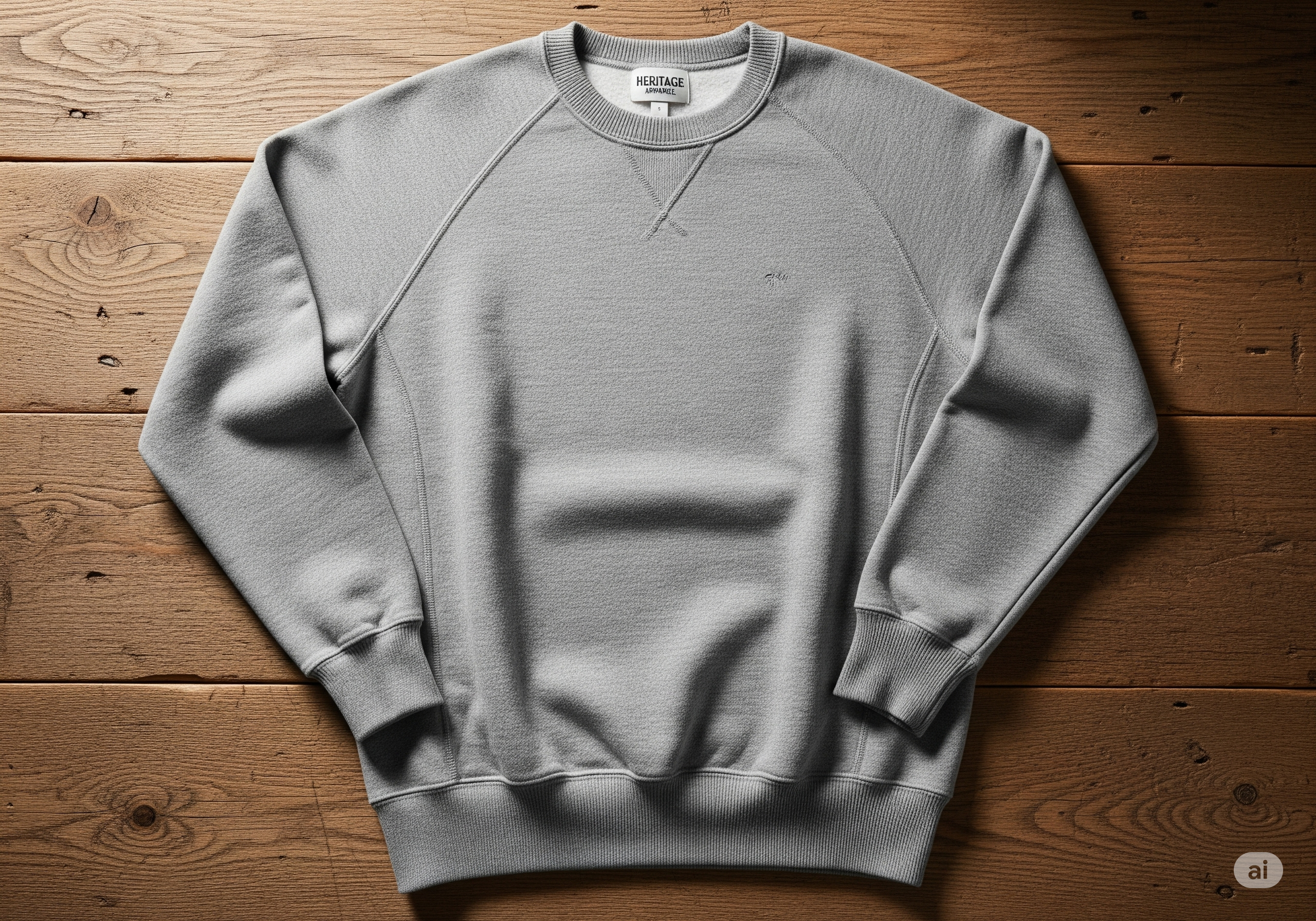When browsing through your wardrobe or shopping for casual wear, you’ve probably noticed a key distinction between regular shirts and sweatshirts. But what exactly makes a shirt a sweatshirt? Is it the material, the style, the fit—or a mix of all three? Let’s break down the key elements that define this classic staple and why it’s such a favourite, not just in streetwear and loungewear, but also as customisable team and workwear.
This guide explores the defining features of a sweatshirt, its origins, fabric types, styling tips, and why it continues to be a must-have for all ages. Plus, we’ll share how Garment Printing, a trusted name in custom apparel in Australia, can help you personalise sweatshirts for your team, brand, or events.
What is a Sweatshirt?
At its core, a sweatshirt is a pullover garment made from thick, soft cotton or a cotton-blend fabric. It’s designed to provide warmth and comfort—ideal for cooler days or active movement. While it shares similarities with a long-sleeve t-shirt or hoodie, it stands out thanks to its structure and heavier material.
Sweatshirts typically feature:
-
Crew necklines (though hooded versions exist)
-
Ribbed cuffs and hem
-
Brushed fleece lining (in most cases)
-
Relaxed or slightly boxy fit
Unlike dress shirts or polo shirts, sweatshirts are not intended for formal wear, but they’ve evolved from gym wear into everyday fashion and branded merchandise.
The Origins: From Athletics to Everyday Fashion
The term sweatshirt dates back to the early 1920s. Originally, these garments were created for athletes to wear during workouts or warm-ups. The fabric was engineered to absorb sweat and keep muscles warm—hence the name “sweatshirt.”
Over time, their comfortable feel and casual look made them mainstream. From sports locker rooms to college campuses and even catwalks, the humble sweatshirt has come a long way.
Key Features That Make a Shirt a Sweatshirt
Let’s explore the defining elements that separate sweatshirts from other types of shirts:
1. Fabric Weight and Texture
Sweatshirts are made from thicker, heavier materials than standard t-shirts or dress shirts. A typical sweatshirt fabric includes:
-
Fleece: Soft on the inside, smooth on the outside
-
Cotton or cotton-poly blends: For durability and comfort
-
French terry: Loopback texture, great for midweight layering
This extra weight gives the sweatshirt its warmth, structure, and cosy appeal.
2. Knitting Style
Most sweatshirts use loopback or fleece-back jersey knit, designed to trap heat while remaining breathable. This is very different from woven shirts or lightweight jersey knits used in standard t-shirts.
3. Fit and Structure
Sweatshirts often have a roomy, boxier fit compared to slim-fit or tailored shirts. This makes them ideal for layering and mobility—whether you’re working outdoors, lounging at home, or attending a casual meetup.
4. Design Elements
While a shirt may have buttons or collars, sweatshirts usually come as pullovers with no buttons or zips, sometimes featuring printed graphics, embroidery, or branding.
Sweatshirts in Workwear and Custom Apparel
In recent years, sweatshirts have carved a place in the workwear and teamwear segment—thanks to their blend of comfort, durability, and customisability.
Brands like Garment Printing in Australia have embraced the sweatshirt’s potential, offering digital printing and embroidery options across:
-
Workwear uniforms
-
Team sweatshirts
-
Promotional giveaways
-
Event or staff apparel
Their no-MOQ (minimum order quantity) policy makes it easy for businesses, schools, sports clubs, and start-ups to order custom sweatshirts in small or large batches.
Whether it’s a branded fleece-lined pullover for a winter work crew or a sporty jumper for a local footy team, sweatshirts are both functional and stylish.
Sweatshirt vs. Hoodie: What’s the Difference?
Though similar in fabric and purpose, hoodies and sweatshirts differ mainly by design. A hoodie includes a hood and often a front pocket (known as a kangaroo pocket), whereas a sweatshirt usually doesn’t.
That said, both can be used interchangeably in casual settings or for branding purposes—and Garment Printing offers both options across multiple sizes and colours, with custom logo printing or embroidery.
Styling Tips: Making the Most of Your Sweatshirt
Sweatshirts are incredibly versatile. Here are a few ways they can be worn:
-
Smart Casual: Pair a plain crewneck sweatshirt with chinos and sneakers for a clean, everyday look.
-
Layered Look: Use it as a middle layer between a t-shirt and jacket.
-
Branded Uniform: Add a company logo to the front chest or back to create a branded team outfit.
-
Sporty Edge: Combine with joggers or athletic shorts for a sporty ensemble.
Whether for lounging or labour, sweatshirts work across all styles.
Custom Sweatshirts with Garment Printing
Looking to create your own line of branded sweatshirts for work, events, or merchandise?
Garment Printing is a go-to custom apparel provider in Australia, offering:
-
A wide garment range: hoodies, jackets, vests, pants & shorts, workwear, activewear, sportswear, and teamwear
-
No minimum order quantity (MOQ)
-
Professional digital printing and embroidery
-
Fast turnaround times
-
Local support and delivery
With their help, you can turn a basic sweatshirt into a walking billboard for your brand—or simply outfit your team with matching gear that blends function and style.
Final Thoughts
So, what makes a shirt a sweatshirt? It’s all in the fabric, construction, and purpose. A sweatshirt is more than just a shirt—it’s a statement of comfort, utility, and style. Whether you’re bundling up for winter work or creating a branded team uniform, this staple has more to offer than meets the eye.
If you’re ready to explore custom sweatshirts or elevate your branded apparel, Garment Printing makes it easy to bring your ideas to life—whether it’s for one piece or one hundred.
